Introduction
In an era where customer expectations are higher than ever, businesses must leverage cutting-edge technologies to stay competitive. One such technology is the implementation of chatbots for customer service, which has proven to significantly enhance operational efficiency and customer satisfaction. This article delves into the strategic steps necessary for successful chatbot deployment, from defining clear objectives and integrating with existing systems, to leveraging advanced language models and ensuring seamless handoffs to human agents.
Additionally, it explores the importance of continuous performance monitoring and the benefits of deploying chatbots across multiple channels to maximize reach. By adopting these best practices, businesses can not only meet but exceed customer expectations, leading to increased loyalty and growth.
Define Clear Objectives and Challenges
Establish specific goals for automated system deployment to improve client support, such as reducing response durations and increasing client satisfaction. Identify particular obstacles within your existing client support procedures that a chatbot can tackle. For instance, automated conversational agents can significantly reduce the response time for handling simple queries, allowing human agents to focus on more complex issues. As stated by Gartner, by 2027, automated conversational agents are anticipated to be the main support channel for a quarter of all enterprises.
Utilizing chatbots can revolutionize client support operations by enhancing efficiency and offering round-the-clock personalized assistance. For instance, the Client Assistance Engine (CSE) utilized in a case study attained over 90% precise resolution of support issues within six weeks. More complex cases were escalated to human agents, creating a feedback loop for continuous improvement. This method enables the support team to focus on delivering outstanding assistance instead of engaging in monotonous activities.
Moreover, AI-powered chatbots like Lyro by Tidio can automate up to 70% of inquiries, typically resolving issues in just 5.7 messages. This not only enhances overall service efficiency but also boosts client satisfaction. In fact, 62% of clients prefer using a chatbot over a human agent for quicker resolution of their issues. As a result, businesses gain from heightened client loyalty and satisfaction.
To ensure successful deployment, chatbots should be designed to align with the business's knowledge and processes, offering controlled and customized responses. This customized method enables businesses to swiftly realize the advantages of AI-driven assistance, offering ongoing support and liberating human representatives to concentrate on more important activities.
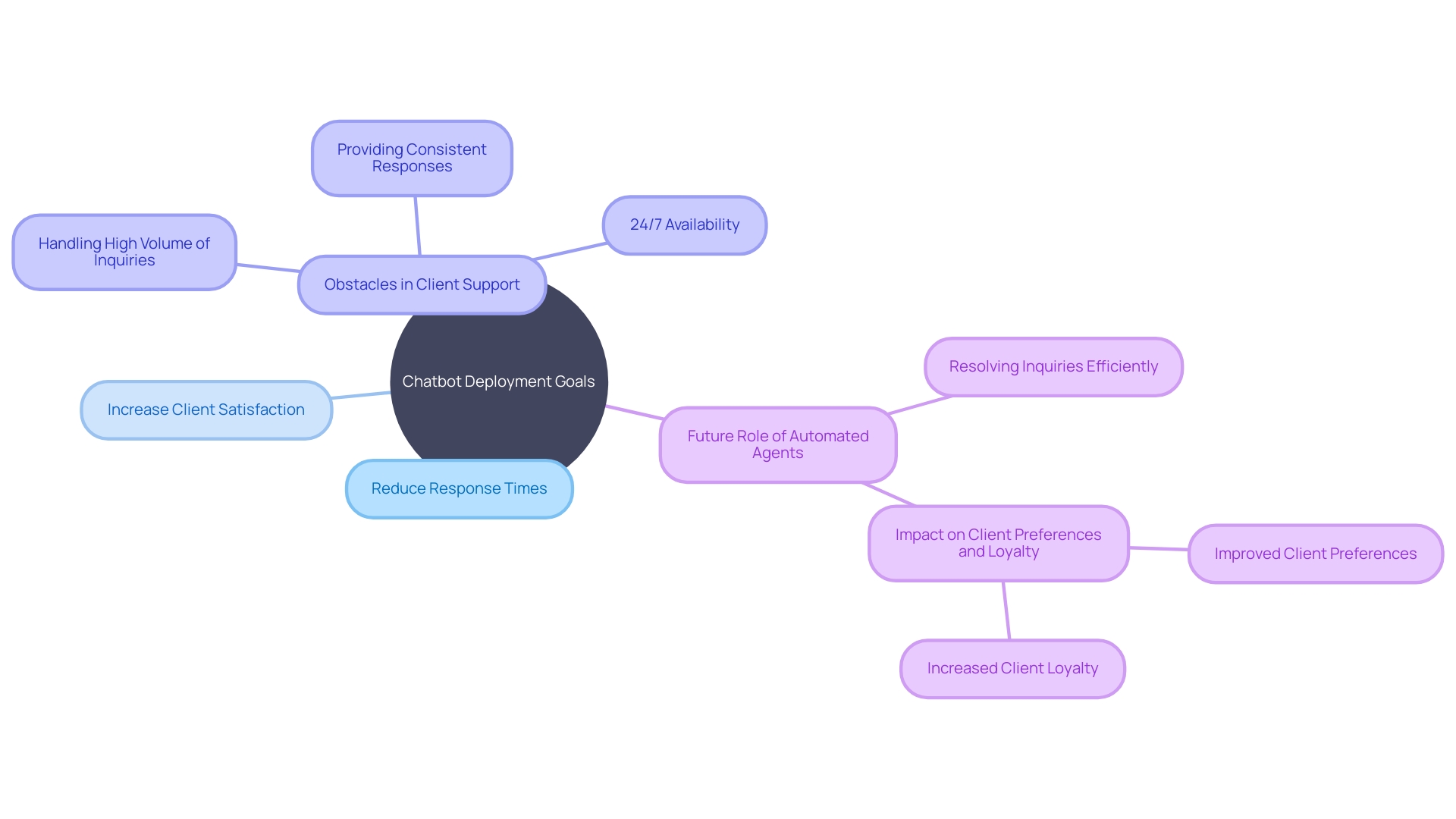
Integrate with Existing Customer Service Systems
Effortlessly merging your virtual assistant with current support systems and tools is crucial for a unified workflow and reliable user experience across all channels. For instance, PenFed's successful integration with Mulesoft and Salesforce enabled a unified view of customer data, streamlining processes across branches and digital platforms. This integration led to a 223% rise in automated interaction activity and addressed 20% of cases on first contact, showcasing the efficiency and effectiveness of AI-driven solutions. Moreover, a prominent biotechnology and pharmaceutical provider enhanced their internal communication system with a new virtual assistant, enabling support agents to promptly consult with more experienced colleagues, thereby decreasing wait times and enhancing response quality during urgent inquiries. By 2027, chatbots are anticipated to become the main avenue for service in a quarter of all businesses, highlighting the significance of proper integration to maximize the advantages for both clients and teams.
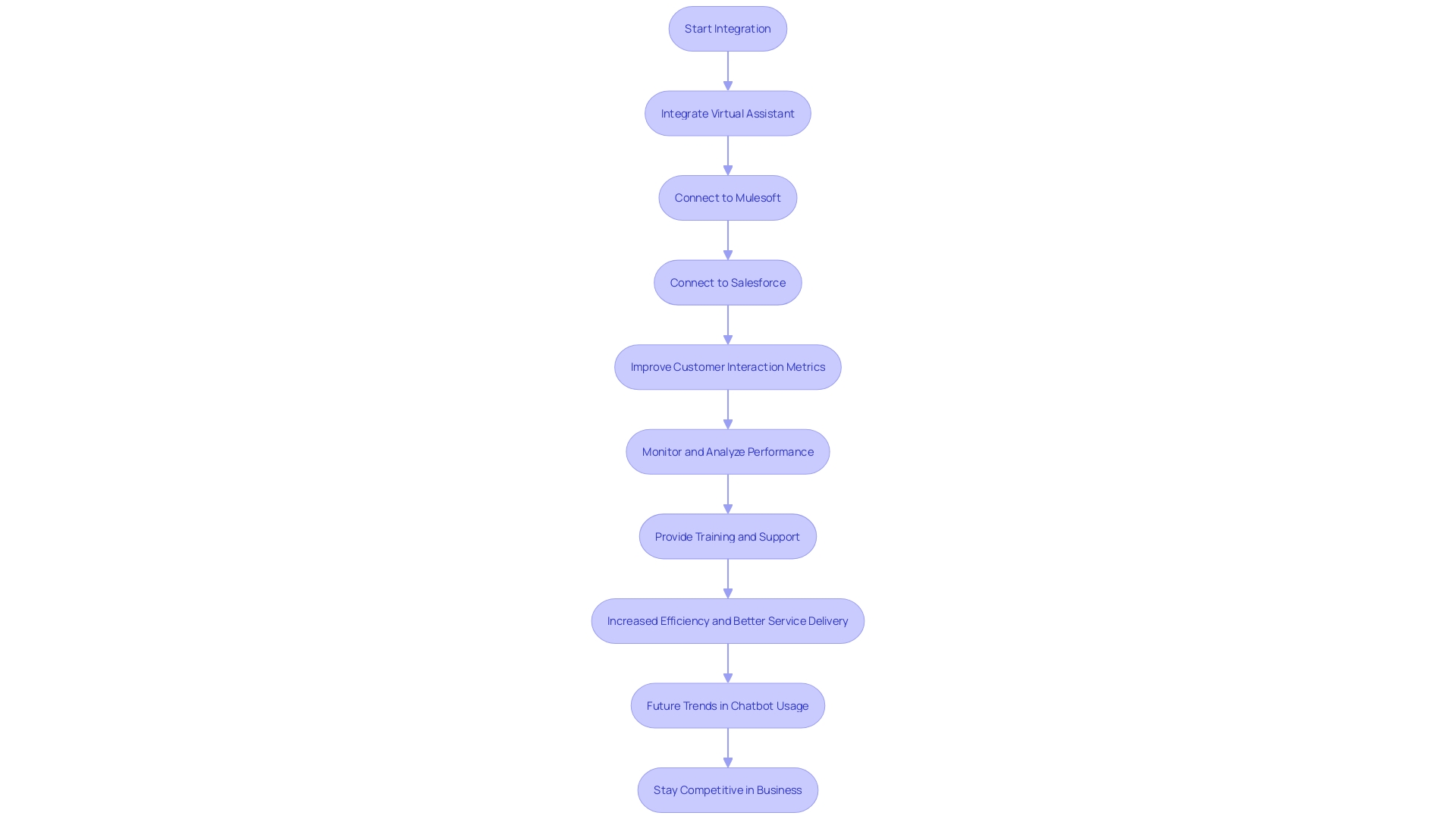
Leverage Large Language Models for Smarter Interactions
Harness the power of advanced language models like ChatGPT to elevate your chatbot capabilities. These models excel in understanding and responding to client inquiries in a more human-like manner, which significantly enhances client engagement and satisfaction. For instance, ChatGPT can handle a wide variety of tasks, from providing detailed product information to assisting with order tracking and addressing frequently asked questions. This level of interaction not only enhances efficiency but also encourages a more personalized shopping experience, resulting in increased client retention and loyalty. As seen with companies like Holiday Extras, leveraging such technology can support innovation and creativity across various departments, ensuring your business stays ahead in the competitive market.
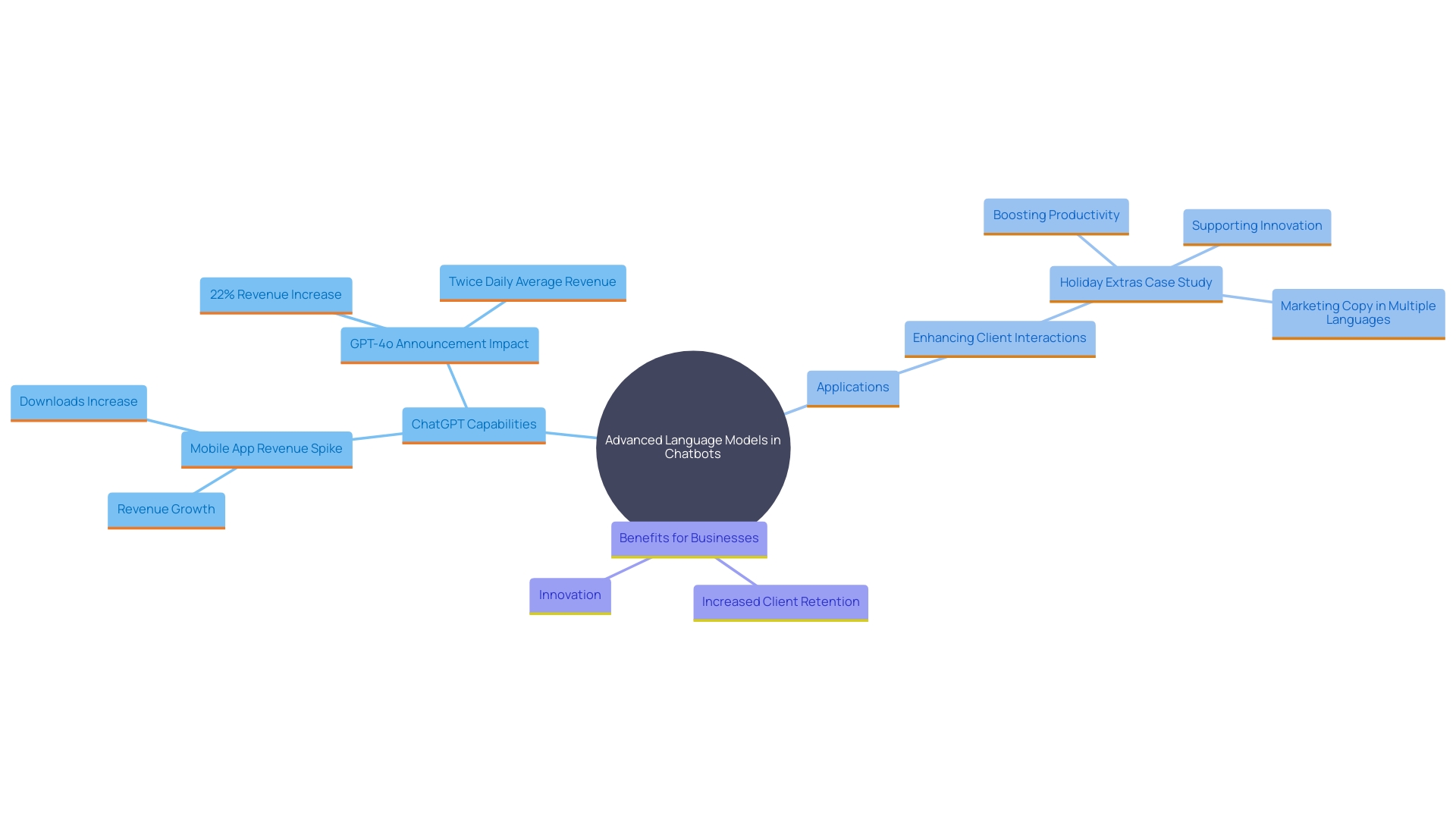
Ensure Seamless Handoff Between Chatbots and Human Agents
To ensure seamless support, design your chatbot system to facilitate smooth transitions to human agents when necessary. This is essential for sustaining high levels of client satisfaction and preventing frustration. Establish clear protocols for handing off interactions, ensuring that clients receive timely assistance. For instance, during our collaboration with a large tools manufacturing and retail business, we integrated the AI Service Engine (CSE) which automated 90% of their inquiries within six weeks. However, the remaining 10% of complex queries were efficiently escalated to human agents, ensuring all client needs were met promptly. This approach not only streamlined the service process but also significantly reduced the response time for more complicated issues. In a similar manner, when we created an automated conversation system for a global electronics manufacturer, clear protocols for handoff were essential. The virtual assistant managed a wide range of product-related inquiries, but when complex problems emerged, the system smoothly transferred these interactions to human representatives, improving the overall user experience. By adopting such strategies, you can ensure that your automated response system not only enhances efficiency but also upholds a high standard of client service.
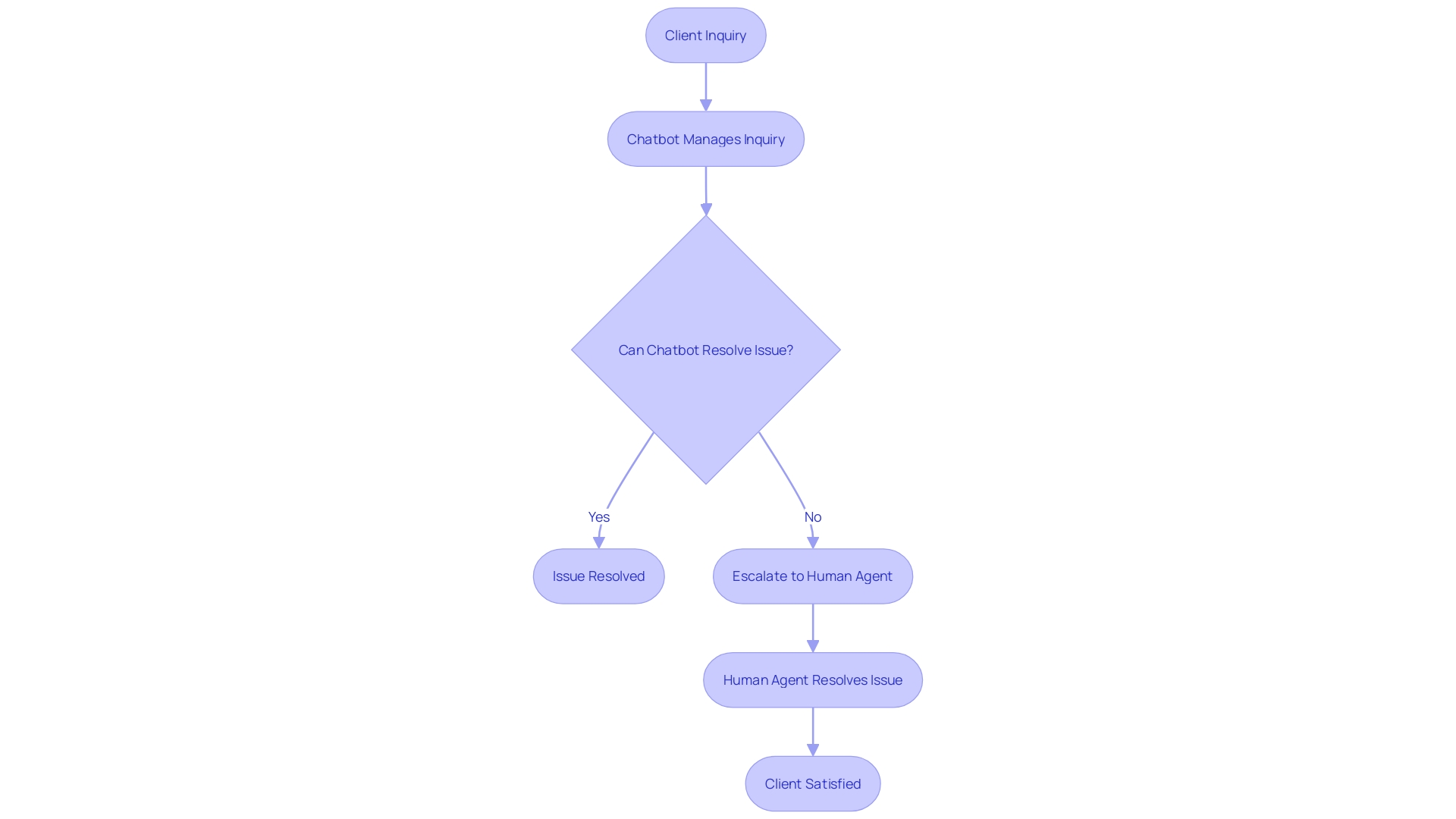
Monitor and Improve Chatbot Performance Continuously
Consistently assess the performance of your automated conversational agent through detailed analytics and user feedback. By utilizing tools such as sentiment analysis and natural language understanding, you can gain deeper insights into user experiences. Utilize this information to consistently improve replies and upgrade functionalities, ensuring the chatbot stays in line with user requirements. For instance, deploying chat models in real-world scenarios and collecting feedback can provide direct signals for improvements. As observed with Holiday Extras, which utilized ChatGPT Enterprise to assist their multilingual marketing team and client support, ongoing evaluation is essential. This approach not only enhances user satisfaction but also contributes to significant cost savings by identifying topics that can be automated.
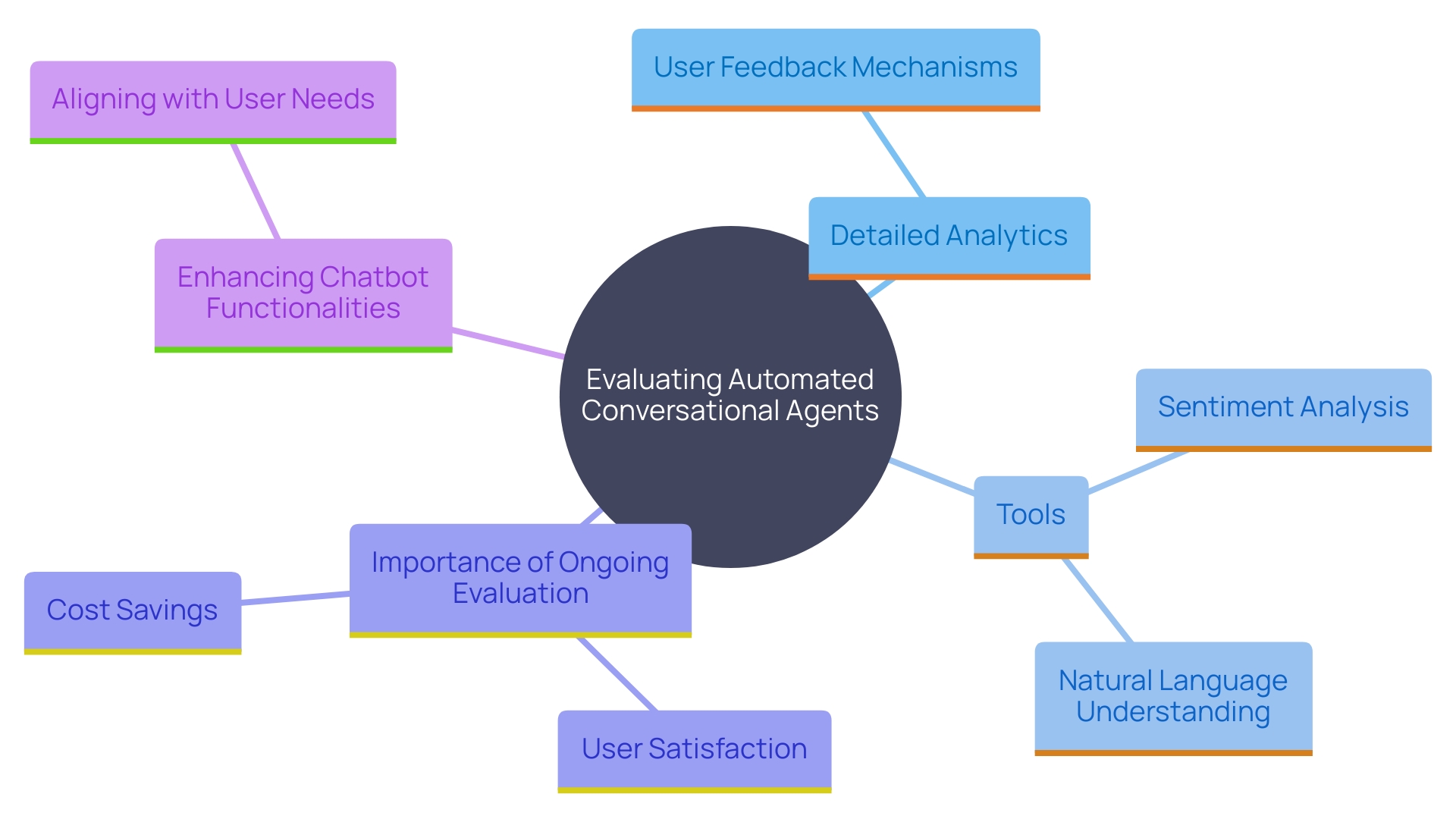
Deploy Across Multiple Channels for Maximum Reach
Implement chatbots on diverse platforms, including websites, social media, and messaging applications, to improve engagement and offer assistance wherever your users are. This strategy not only maximizes engagement but also ensures a seamless experience. For instance, a global electronics manufacturer partnered with Infobip to develop an AI-powered chatbot. This bot was integrated into their website to enhance the user experience and drive sales, proving especially effective during Black Friday promotions.
Chatbots offer significant benefits, such as improved efficiency by handling multiple inquiries simultaneously, 24/7 availability for instant assistance, and substantial cost savings by reducing the need for large support teams. They deliver reliable and precise answers, reducing mistakes and improving client satisfaction. In fact, research indicates that Facebook Messenger automated assistants can provide up to 80% improved engagement in comparison to traditional channels such as email marketing.
Additionally, automated conversation agents gather valuable information on customer behavior and preferences, which can be utilized to enhance business operations. 'The incorporation of Generative AI into conversational agents is becoming increasingly popular, with over 80% of enterprises planning to invest in these solutions within the next two years.'. Such advancements are driving heightened engagement rates and personalized interactions at scale, making automated conversational agents an indispensable tool for modern e-commerce strategies.
In conclusion, implementing chatbots across multiple platforms not only meets the rising customer demands for instant and reliable support but also positions businesses to benefit from higher engagement and operational efficiency.
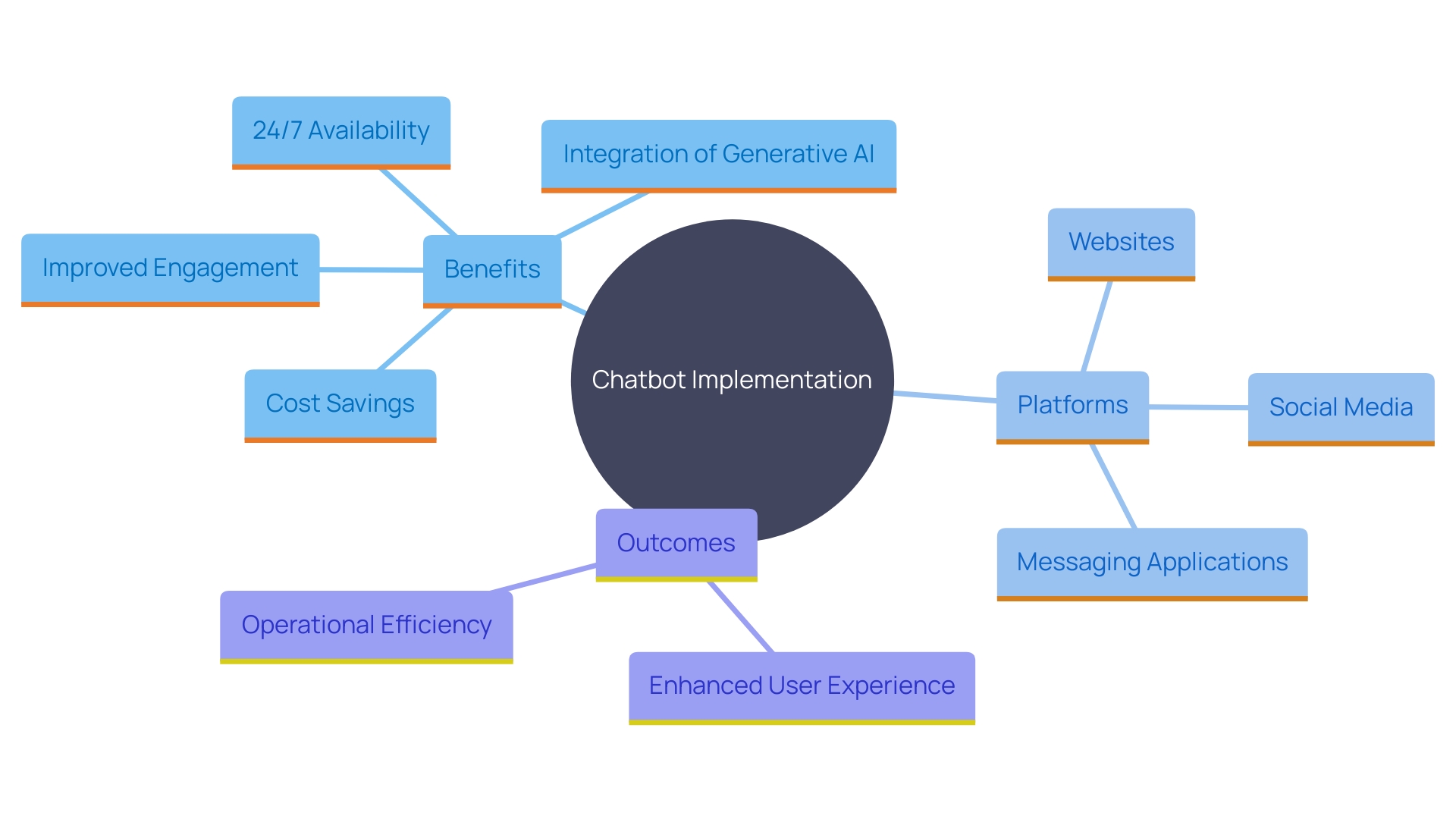
Conclusion
The successful deployment of chatbots in customer service hinges on several strategic steps that collectively enhance efficiency and customer satisfaction. Defining clear objectives is essential, as it allows businesses to identify specific challenges that chatbots can address, such as minimizing response times and improving service quality. By automating routine inquiries, chatbots free human agents to focus on more complex issues, ultimately leading to better customer experiences and increased loyalty.
Integrating chatbots with existing systems ensures a seamless workflow and consistent service across different channels. This integration not only enhances the overall customer experience but also boosts operational efficiency, as evidenced by notable case studies where businesses reported significant improvements in case resolution rates. Leveraging advanced language models further enriches interactions, making them more human-like and engaging, which is crucial in retaining customers in a competitive marketplace.
Ensuring a smooth handoff between chatbots and human agents is another critical factor. Establishing clear protocols for transitioning complex queries prevents customer frustration and maintains a high standard of service. Continuous monitoring and improvement of chatbot performance through analytics and user feedback are vital for adapting to changing customer needs and optimizing service delivery.
Deploying chatbots across multiple channels maximizes reach and engagement, catering to customers wherever they are. This multi-channel strategy not only improves efficiency and availability but also generates valuable insights into customer behavior, allowing businesses to refine their operations. As the reliance on chatbots grows, embracing these best practices will position businesses to meet evolving customer expectations and drive sustainable growth.





